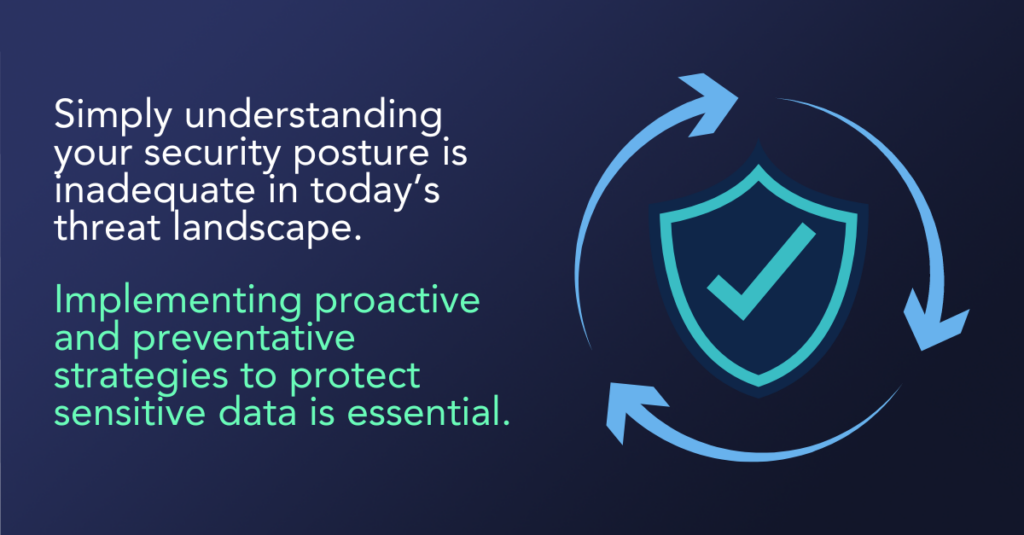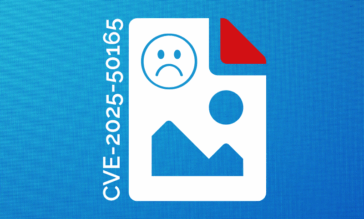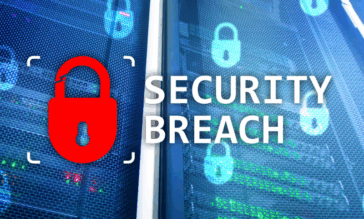Another Day, Another Breach: AT&T and the Telecom’s Turmoil

2024 has unfolded as a particularly tumultuous year in cybersecurity, marked by high-profile data breaches that have impacted millions of individuals and numerous industries worldwide. This year’s breaches have been notable for their frequency and the breadth of their impact, affecting sectors from healthcare to financial services and beyond. They may have varied widely in method and impact, yet all revolve around organizational challenges in protecting sensitive information.
As we are only halfway through the year, yet another significant data breach has surfaced, this time involving AT&T, one of America’s largest telecom giants. This incident is a stark reminder that data protection is no longer a question of if but when and how severe.
Each new breach provides valuable lessons on potential security gaps to address and proactive security measures that can be taken to avoid future incidents.
AT&T’s Slow Burn Breach
In 2021, a cybersecurity nightmare began to unfold for AT&T when ShinyHunters, a notorious hacking group, claimed to possess a database containing the personal information of 70 million AT&T customers. Initially, AT&T denied these allegations, stating that no breach had occurred. However, as time progressed, the situation evolved dramatically, leading to eventual acknowledgments of compromised data and an ever-increasing number of affected users.
The breach’s impact was vast and varied. Early reports from the hacking forums suggested that the data encompassed a wide range of personal identifiers—from names and phone numbers to more intricate details that could include service-specific information. The revelation of such data on the dark web posed a significant threat, potentially exposing millions to identity theft and fraud. The broad scope of compromised data highlights the severe implications of cybersecurity lapses in protecting sensitive information.
AT&T’s response to the breach underwent several phases:
- After initial denials, the company had to confront reality as evidence mounted and public pressure intensified. Their communication was criticized for delays, which may have exacerbated customer anxieties and uncertainty.
- In response, AT&T took measures to mitigate the impact, including enhancing security protocols and cooperating with law enforcement to address the vulnerabilities that had been exploited.
- One critical issue the breach highlighted was the security shortfalls within AT&T’s operations. It became apparent that there were significant lapses in their security protocols, particularly concerning third-party vendor management and possibly outdated security infrastructure.
Snowflake Stays in the Spotlight
As if this existing issue was not enough, further information emerged about how AT&T’s use of Snowflake as a third-party cloud platform significantly escalated the impact of the data incident. By leveraging a third party, this breach exposed the call and text records of nearly all of AT&T’s cellular customers over an extended period, shedding light on the extensive scope and scale at which data can be compromised through third-party platforms.
The involvement of Snowflake laid bare the communications metadata of millions of individuals—from phone numbers to the duration and frequency of their calls and texts. This occurred from May to October 2022, with additional records from January 2023 also compromised. The sheer volume of data exposed highlights the critical role that third-party vendors play in the cybersecurity ecosystem and the magnified risks they can introduce.
While the breach did not expose the content of the communications, the metadata itself can be highly sensitive. Metadata provides enough context to allow malicious actors to infer personal habits, relationships, and behaviors. This information poses substantial privacy risks when accessed without authorization, particularly as phone numbers and other metadata can often be linked to specific identities using online tools.
The significant delay in detecting and reporting the breach compounded its severity. This delay extended the period when unauthorized parties accessed sensitive data, potentially leading to further exploitation. The protracted exposure window underscores the need for improved detection capabilities and faster response strategies to mitigate the impacts of such breaches.
The repercussions of this breach extended beyond the direct exposure of data, affecting customer trust and drawing considerable regulatory scrutiny. Agencies like the FBI and FCC became involved based on the profound security implications for national communication infrastructure. Such scrutiny often leads to calls for tighter regulations and can significantly affect how companies manage data security and cooperate with third-party vendors.
Misdirection Fans the Fire
In the unfolding narrative of AT&T’s massive data breach, the company’s initial response played a critical role in shaping public perception and regulatory scrutiny. Initially, AT&T downplayed the severity of the breach, characterizing it as a minor leak involving only “metadata about cell records.” This minimization aimed to reassure stakeholders and the public, suggesting that the breach did not compromise substantive personal information.
However, as more details emerged, the reality of the situation proved to be much more complex. The breach’s scope gradually expanded, with new revelations showing that the data involved was more extensive and sensitive than initially disclosed. This pattern of gradual disclosure not only complicated the initial downplay but also led to significant backlash from consumers and the media. The slow drip of information eroded trust and raised serious questions about the transparency of AT&T’s communications.
This erosion of trust is a critical issue for any corporation, especially one that handles as much sensitive consumer data as a major telecommunications company. The perceived misdirection in AT&T’s initial response exacerbated public relations challenges and intensified scrutiny from the media and the customer base.
Legally and regulatorily, the consequences of such misdirection were significant. Misinformation about the breach’s nature and extent can lead to more severe penalties from regulatory bodies, which expect accurate and timely reporting of data security incidents.
Finding a Better Path
In the wake of numerous high-profile data breaches, like those experienced by AT&T, organizations increasingly recognize the importance of adopting proactive defenses that protect sensitive data. One of the most effective strategies in this regard is the implementation of Data Detection and Response (DDR) systems.
Even the most basic DDR systems provide real-time monitoring and analysis of data flows within an organization. This proactive approach enables the early detection of potential threats and the prompt mitigation of privacy risks before any significant harm can occur. By shifting from a traditional reactive security posture to a more proactive one, organizations can significantly reduce the likelihood of data breaches, maintaining the integrity and confidentiality of their critical data. This change is crucial in preventing incidents rather than merely responding after data compromises have occurred, which happens to be the case with this AT&T breach.
As threats escalate and tactics evolve with the prevalence of Generative AI, advanced DDR systems must be utilized. Advanced DDR solutions leverage sophisticated analytics and machine learning algorithms to detect anomalies and potential threats as they emerge. These technologies are adept at scanning for unusual patterns that might indicate a breach or an unauthorized attempt to access or corrupt data. These advanced threat detection capabilities are essential for identifying risks that traditional security measures may overlook when used alone (e.g. antivirus, DSPM), allowing organizations to respond swiftly and effectively to protect their sensitive data from unauthorized access or loss.
Fortifying Cybersecurity with Layered DDR
DDR is designed to secure various data types across multiple platforms and devices, which is vital in today’s diverse and complex digital environments. It addresses the challenge of protecting unstructured data, which is often targeted in cyberattacks due to its volume, variety, and movement into and within a network. Votiro’s Zero Trust DDR provides a comprehensive safety net across all these vectors, tackling risks to privacy and harm via malware threats in a layered approach to data security, enhancing an organization’s ability to safeguard critical information no matter where it resides.
Integration of Votiro DDR with existing security infrastructures enhances the overall effectiveness of security systems. Not only does it automate the response to detected threats, it facilitates the coordination of actions across various layers of defense. This integration streamlines the response process and reduces the time between threat detection and response, minimizing potential damage. Automation ensures that security systems remain vigilant and responsive, which is crucial for maintaining continuous data protection without constant human supervision.

Votiro’s advanced DDR solution delivers the proactive, preventive security modern enterprises require to effectively neutralize threats before they escalate. Incorporating zero trust principles and seamlessly integrating DDR with its proven and trusted Content Disarm and Reconstruction (CDR) technology, Votiro ensures that security strategies are proactive and robust. This comprehensive approach not only safeguards data from current privacy threats and malware but also equips IT and security operations centers (SOCs) with the necessary analytics to preempt and counter future attack strategies, maintaining a resilient security posture.
As machine learning and mass data ingestion become more prevalent, it’s crucial to reassess your data security strategies for potential gaps in proactive defenses. It’s also time to rethink a reliance on what’s always been done as the same breaches continue to plague the cybersecurity landscape, disrupting customer trust and causing millions in ransomware payouts each and every year.
Sign up for a one-on-one demo or try our platform for 30 days to upgrade your security measures with Votiro DDR, which not only guards against data breaches but also strengthens customer trust by ensuring robust data protection.
News you can use
Stay up-to-date on the latest industry news and get all the insights you need to navigate the cybersecurity world like a pro. It's as easy as using that form to the right. No catch. Just click, fill, subscribe, and sit back as the information comes to you.
Sign-up Here!
Subscribe to our newsletter for real-time insights about the cybersecurity industry.



